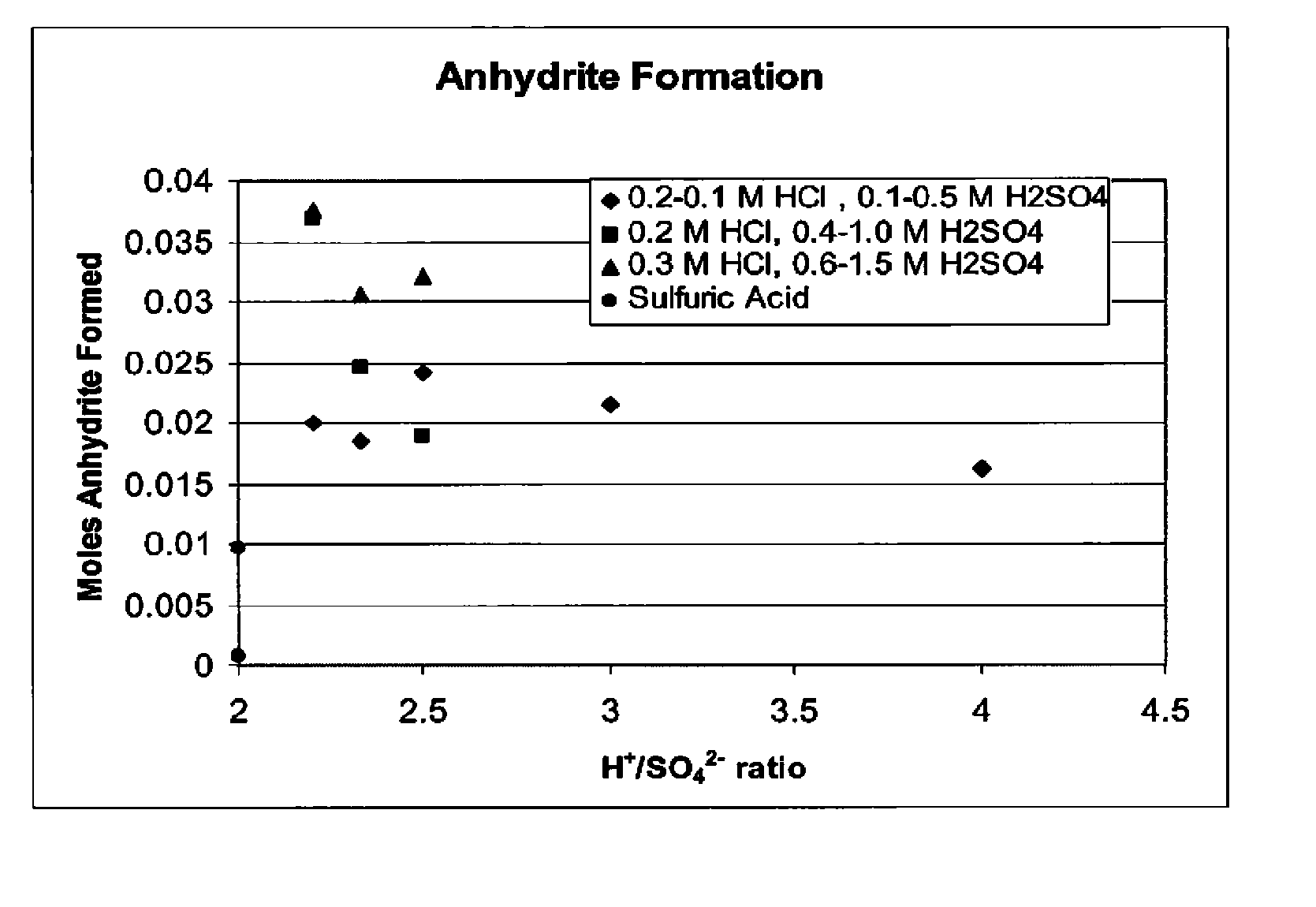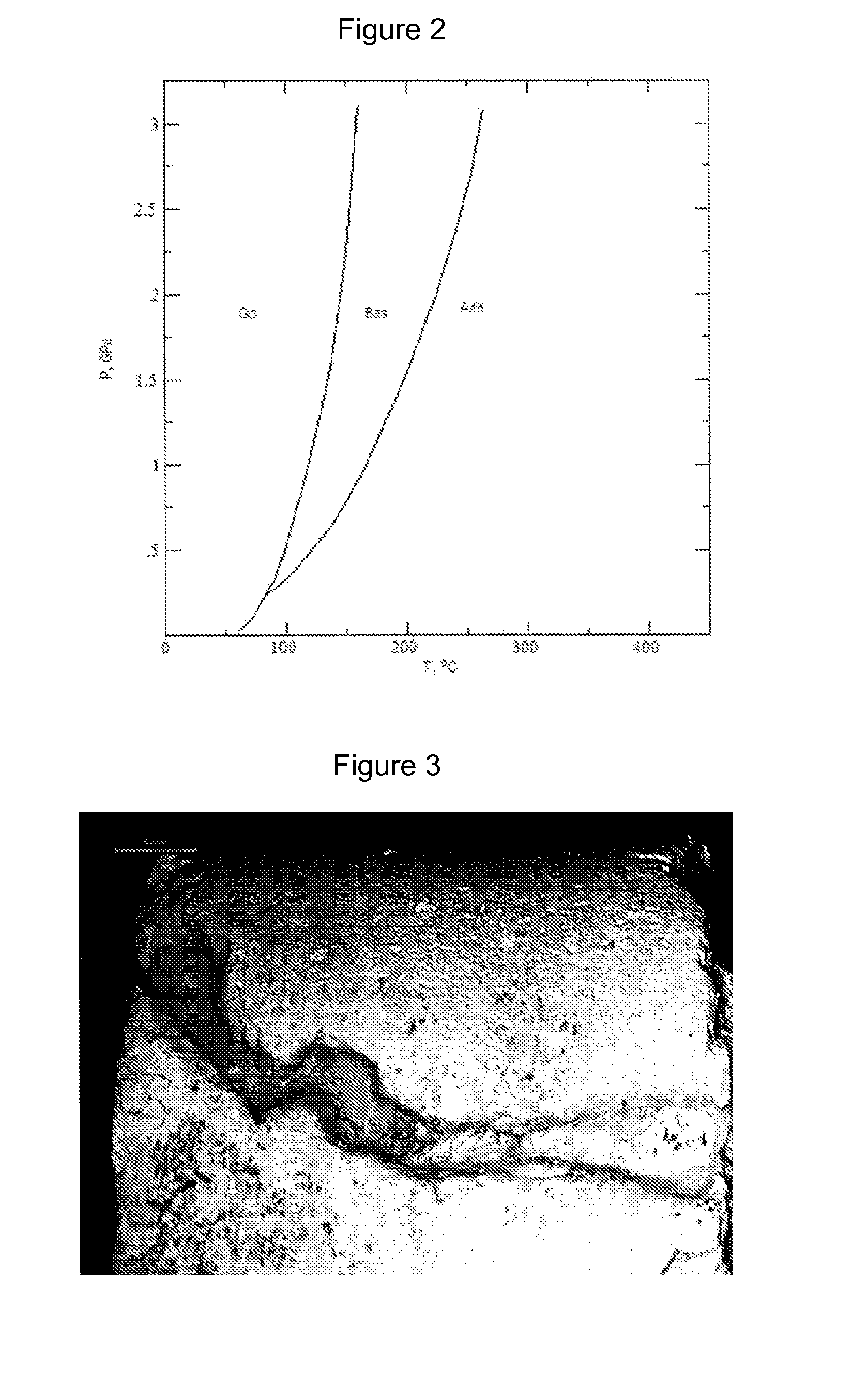Sealing of thief zones
a technology of thief zones and sealing, which is applied in the direction of earthwork drilling, fluid removal, drilling composition, etc., can solve the problems of large water production risks of production wells, large amount of injected fluid in the production well, and thief zones also affecting the sweep efficiency
- Summary
- Abstract
- Description
- Claims
- Application Information
AI Technical Summary
Benefits of technology
Problems solved by technology
Method used
Image
Examples
example 1
Static Experiments
[0108]Static experiments were performed on cubic chalk samples of 8 cm3. The samples were sawed and then put in an ultrasonic bath to remove the saw dust. Thereafter, the samples were dried and weighed. Next, the samples were saturated with water by using a vacuum chamber. After the experiments all samples were rinsed, filtered and weighted. The remaining solution was analysed for residual sulfate ions. In the static experiments different concentrations of acid mixtures were used, and the cubic chalk samples were submerged in the acid mixtures. The temperature was 80° C.
[0109]
TABLE 1Acid mixtures used in static experimentsSample ID (#)HCl (M)H2SO4 (M)Acid ratio700.12901.02100.20.14110.10.13120.10.22.5140.10.32.33130.10.52.2160.20.42.5180.20.62.33190.21.02.2230.30.62.5240.30.92.33260.31.52.2
[0110]The results from the individual chalk samples are presented in Table 2. To compare the different chalk samples, three different methods are used:[0111]Difference of weight ...
example 2
Flow Experiments—General Experimental Setup
[0115]In the dynamic flow experiments with a large core holder, various parameters concerning acid injection into chalks have been investigated:[0116]Flow rate.[0117]Time of injection.[0118]Acid ratio.[0119]Concentration.[0120]Back pressure.[0121]Type of opening.
[0122]The core dimensions in these tests are 48 mm diameter and 150-180 mm in length. To prevent an outflow of fines it was chosen to flush the cores with brine instead of water before the acid injection.
[0123]The general experimental setup for the flow experiments on fractured chalk cores is described in the following with reference to the schematic diagram shown in FIG. 7. Injection fluid is pumped through the fracture of a chalk core, and the effluent is collected. The injection pressure is measured with pressure transducer 1, and the effluent pressure is measured with pressure transducer 2. The setup caps the differential pressure between pressure transducer 1 and 2 to 40 bar. T...
example 3
Flow Experiments—Obtaining Data
[0124]Flow experiment 10 was the first experiment with a 3 mm hole drilled into the core. The flow rate was 0.250 ml of 0.3 / 0.9 M HCl / H2SO4 per minute. This flow rate and the acid mixture were based on the previously conducted static experiments initial the flow experiments using a smaller core holder. Flow experiment 10 is considered to be the base case. The other experiments are variations on this base case.
[0125]The base case will be worked out with the recordings of the pressure data and an image of the result of the experiment. The parameters and results of the flow experiments are shown in table 3.
[0126]FIG. 8 shows the pressure data recorded during flow experiment 10. Due to temporarily malfunctioning data acquisition some time gaps are present in the recorded data. “Press 1” is the injection pressure in bars of pressure transducer “1”, “Press 2” is the pressure in bars of pressure transducer “2”, at the end of the core. “Dp40Bar” is the differe...
PUM
| Property | Measurement | Unit |
|---|---|---|
| differential pressure | aaaaa | aaaaa |
| injection pressure | aaaaa | aaaaa |
| ionic strength | aaaaa | aaaaa |
Abstract
Description
Claims
Application Information
 Login to View More
Login to View More - R&D
- Intellectual Property
- Life Sciences
- Materials
- Tech Scout
- Unparalleled Data Quality
- Higher Quality Content
- 60% Fewer Hallucinations
Browse by: Latest US Patents, China's latest patents, Technical Efficacy Thesaurus, Application Domain, Technology Topic, Popular Technical Reports.
© 2025 PatSnap. All rights reserved.Legal|Privacy policy|Modern Slavery Act Transparency Statement|Sitemap|About US| Contact US: help@patsnap.com



